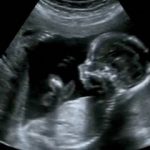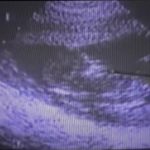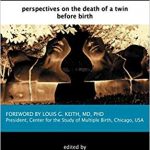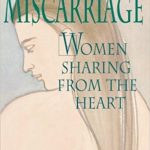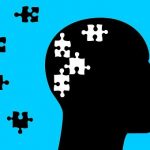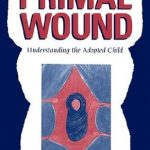Book Review – A Child Is Born
[A Child Is Born, Lennart Nilsson and Lars Hamberger, September 2003, published by Bantam Dell, translated by Linda Schenk, ISBN: 978-0-385-33754-0]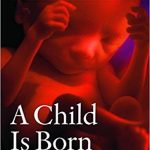
I first stumbled across this gem in a library and later ordered a copy for myself. I value its scientific data, timelines, and pictures of various gestational developmental stages [and even hormones, seen below with the quote from page 85]. CAUTION-The first parts of A Child Is Born especially show TMI, in my opinion, yet the rest is well-worth (again in my opinion) overlooking those earlier images. Here are just a few of the many quotes I value from this book.

Page 86 “…the primitive brain begins to form…and the spinal cord starts to form. On approximately the fifteenth day in the life of the embryo, the first primitive nerve cells…are formed.” [The picture above reminds me of what was left of my son by the time I finally attempted to snap a photo of his degraded body.]
Page 97 “…the brain and the spinal cord will emit signals to all the muscles in the body. . .and information will be returned to the brain via the spinal cord. . .. This signaling system begins to operate fully when the embryo is six or seven weeks old. . .. Thus an entire nerve structure serving our senses is constructed very early in life indeed.”
Page 62 “The nuclei [from the male now inside the egg and from the female] are drawn inexorably toward each other, and when they meet, they fuse. At that moment a unique genetic code, a human embryo, is created.”
Page 65 “The new individual is a product of its parents, with some genetic material from the mother and some from the father. . .. Many people define this as the moment life begins.”

Page 85 “As early as about ten days after fertilization, the level of progesterone…in the blood rises dramatically. Many women feel this change distinctly. A woman’s breasts become tender, even more so than prior to menstruation, and some morning nausea is not unusual. Inside the womb the embryo has just been implanted in the uterine lining, entering into an intimate alliance with the mother…” [The picture above reminds me of what he allowed me to see through his eyes. Also, read Fetomaternal Cell Transference and Life Affirming Microchimerism.]
Continue reading...
Page 86 “At the beginning of week 5 of pregnancy, the embryo is just a few millimeters…long, and its curved body is soft and transparent. Along the length of its body runs a nerve tube, and the brain has just begun to form at the head end…”
Page 93 “The heart begins to develop when the embryo is still but a cluster of cells, and as early as its twenty-second day the newly formed heart muscle cells contract, and the heart beats for the very first time….At this stage the heart already has two chambers (ventricles) and is so large that it almost seems to be outside the rest of the body….The heartbeat of the embryo is very rapid, nearly twice that of the mother, and can easily be heard even with very simple listening devices. Heart rate is one of the most reliable ways of knowing how the fetus is faring.”
Page 96 “[At 28 days,] we see the whole vertebral column, running down from the neck to where the legs will be.” [The embryo measures 6 mm at this point.]
Page 97 “The vertebrae must not fuse—if they did, the backbone could not bend. Elastic tissue and muscles will hold the vertebrae together and gradually steady the backbone.”
Page 97 “Now we see the eyes, nose and mouth—a developing face…” [at 30 days, the embryo measures 7 mm].
Page 100 “When the embryo is about six weeks old, its appearance begins to change…it now begins to look like a miniature human being…” [at 39 days, the embryo measures 12 mm].
Page 101 [Caption header reads “Jumping for joy.”] “Even this early in pregnancy, the embryo is extremely lively, in constant motion, sleeping for only brief periods…” (Read Personhood Stories and Isaac’s Personhood Story.)
Page 101 “The embryo has…begun to move: the first “visible” motion is the rapid, steady beating of the heart, but soon small bodily movements show that nerve impulses coming from the brain are instructing muscles to contract. These begin as global motions, affecting the whole body, but gradually specific little movements take place…. This constant motion is important, stimulating normal growth and development of the muscles and joints.”
Page 103 “[As] early as seven to eight weeks after the woman’s last menstrual period, [5-6 weeks conception] the placenta produces all the necessary hormones; the ovaries are no longer needed for that purpose. Hormone production by the placenta is essential for the normal continuation of pregnancy and for the fetus to develop ‘according to plan.’”
Page 108 “When the tenth week of pregnancy begins (fifty-six days after fertilization), the embryonic stage is over. The heart has been beating for a month, and the muscles of the torso, arms, and legs have begun to exercise. All the organs are in place, although they are still small and immature and far from coordinated in their functions. The embryo, now referred to as the fetus, has passed its first test with flying colors and will go on developing until it is ready to be born.”
Page 109 “The placenta, which has spread across specific sections of the uterine lining, has taken over production of all the hormones needed to keep the fetus comfortable and developing properly. The progesterone-producing function of the ovaries is now concluded.”
